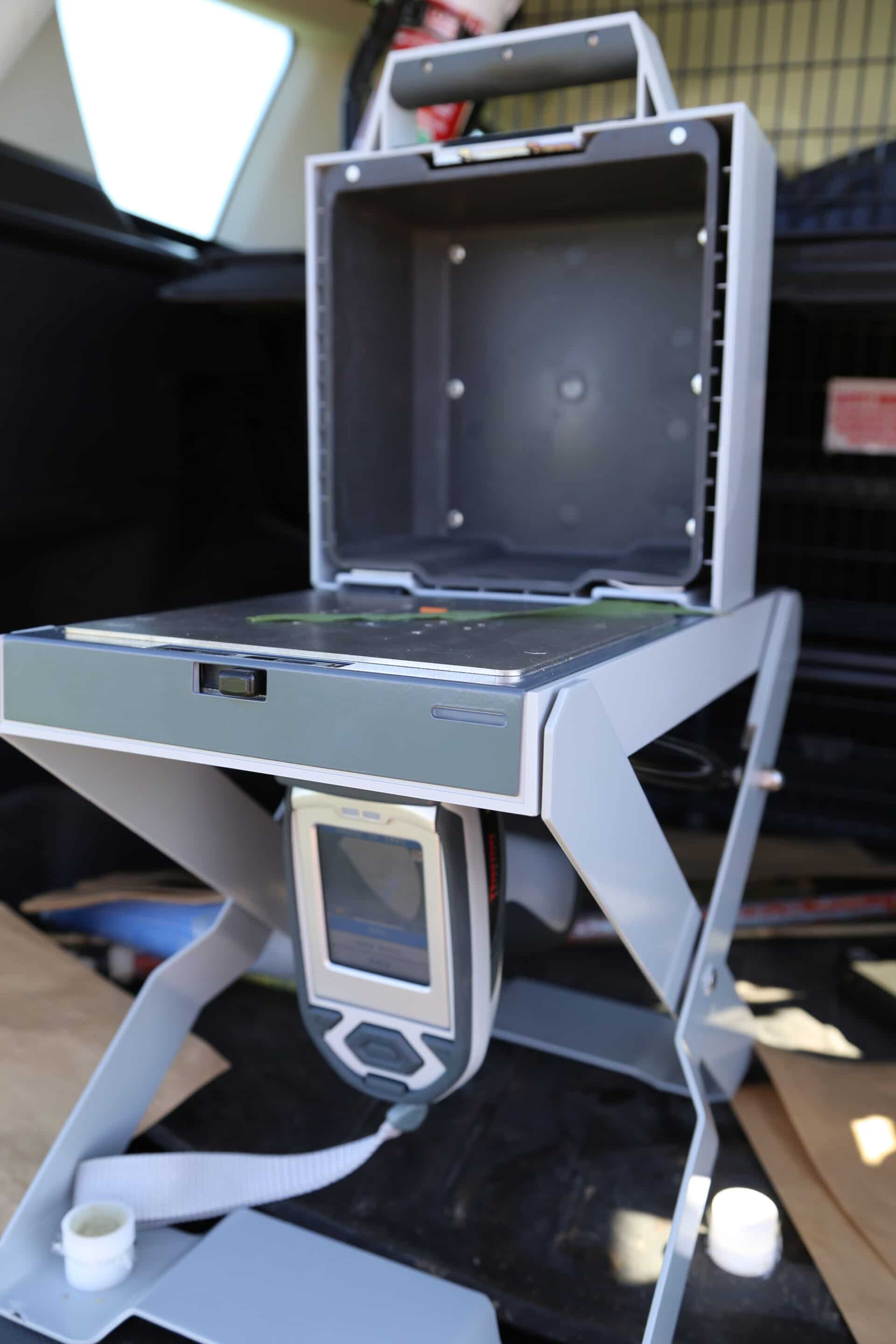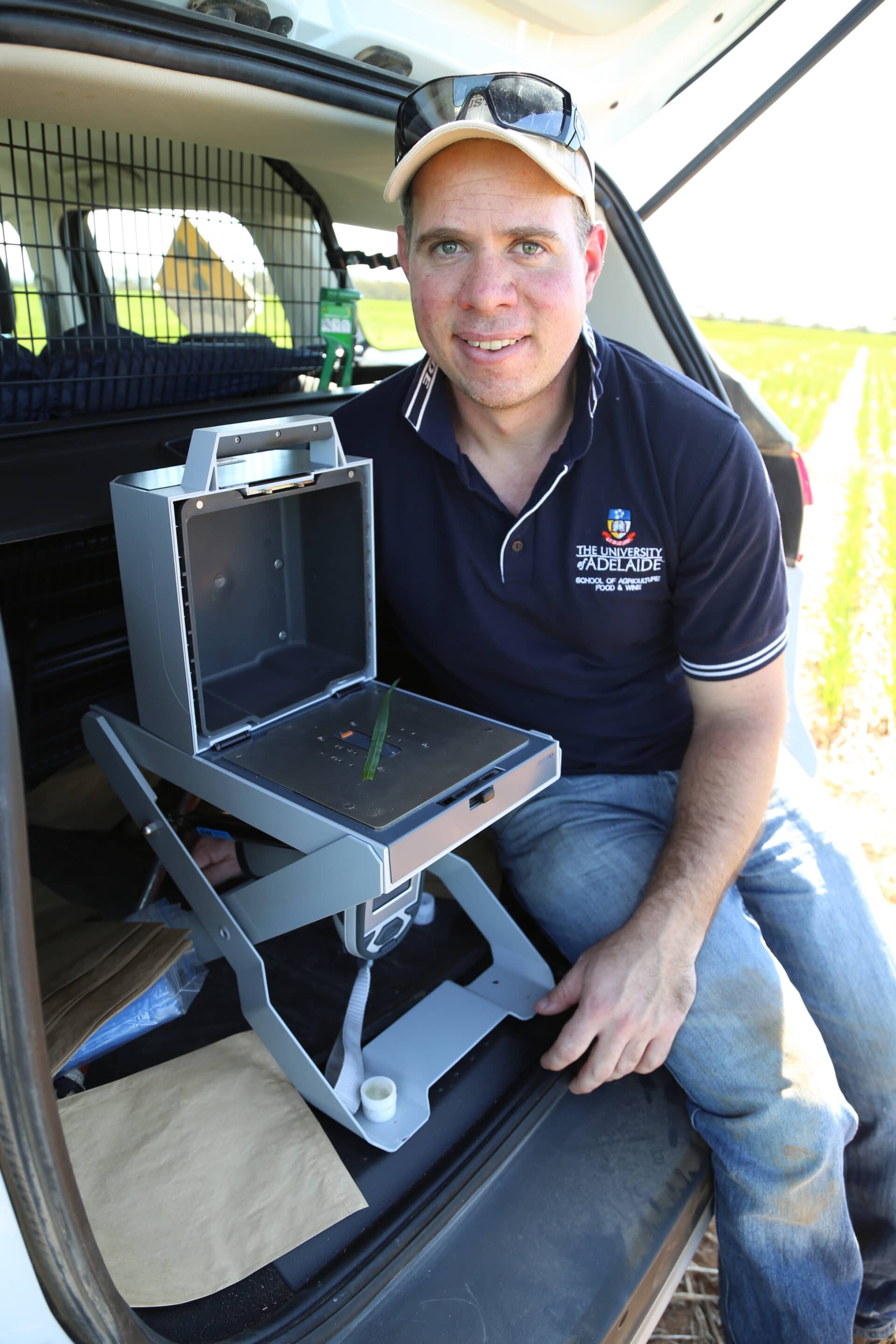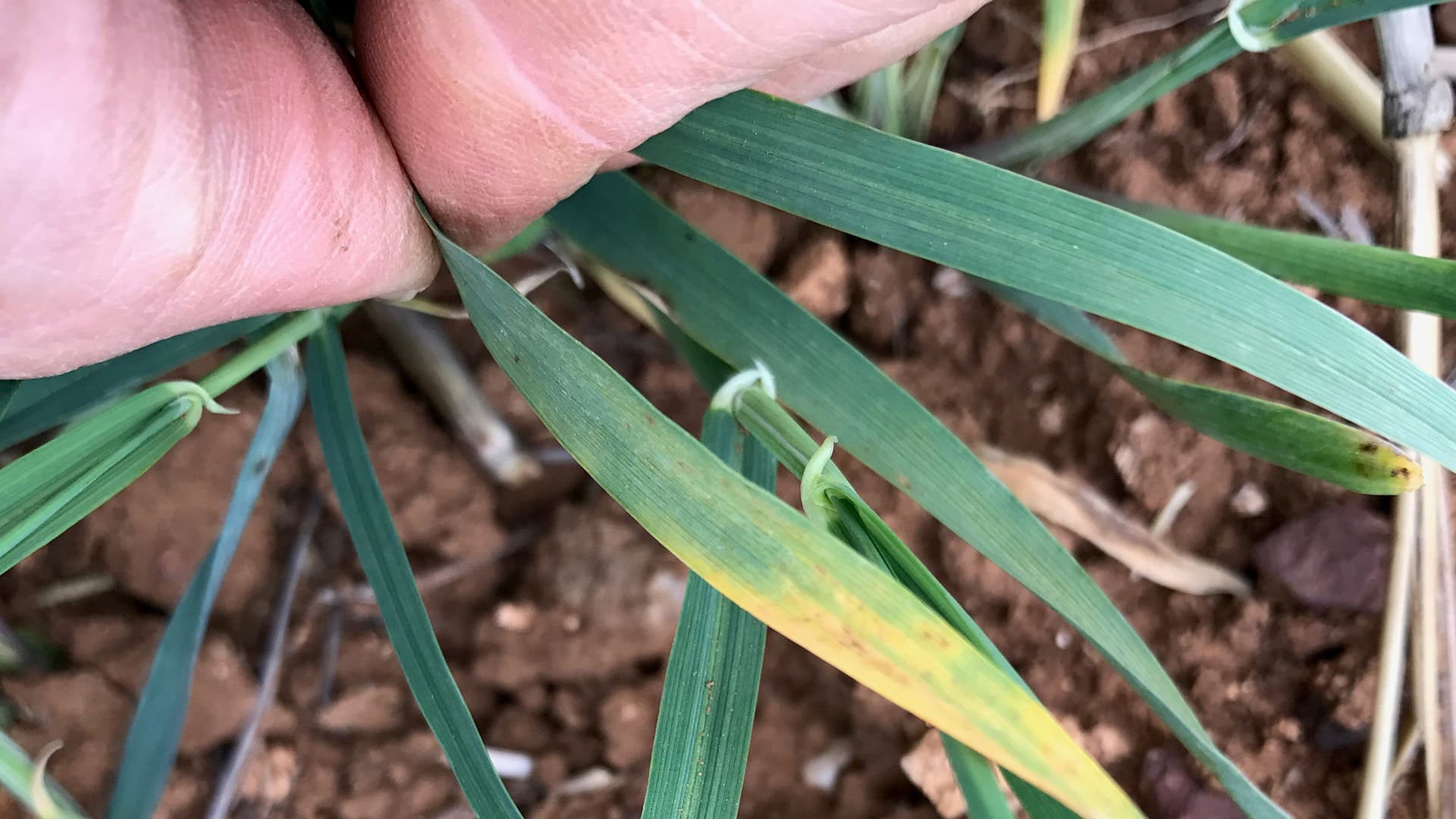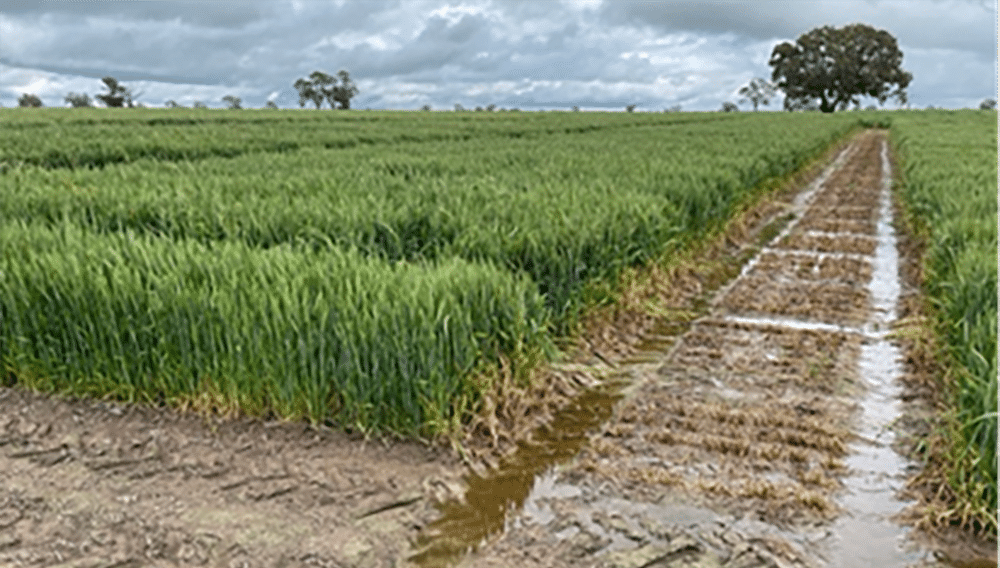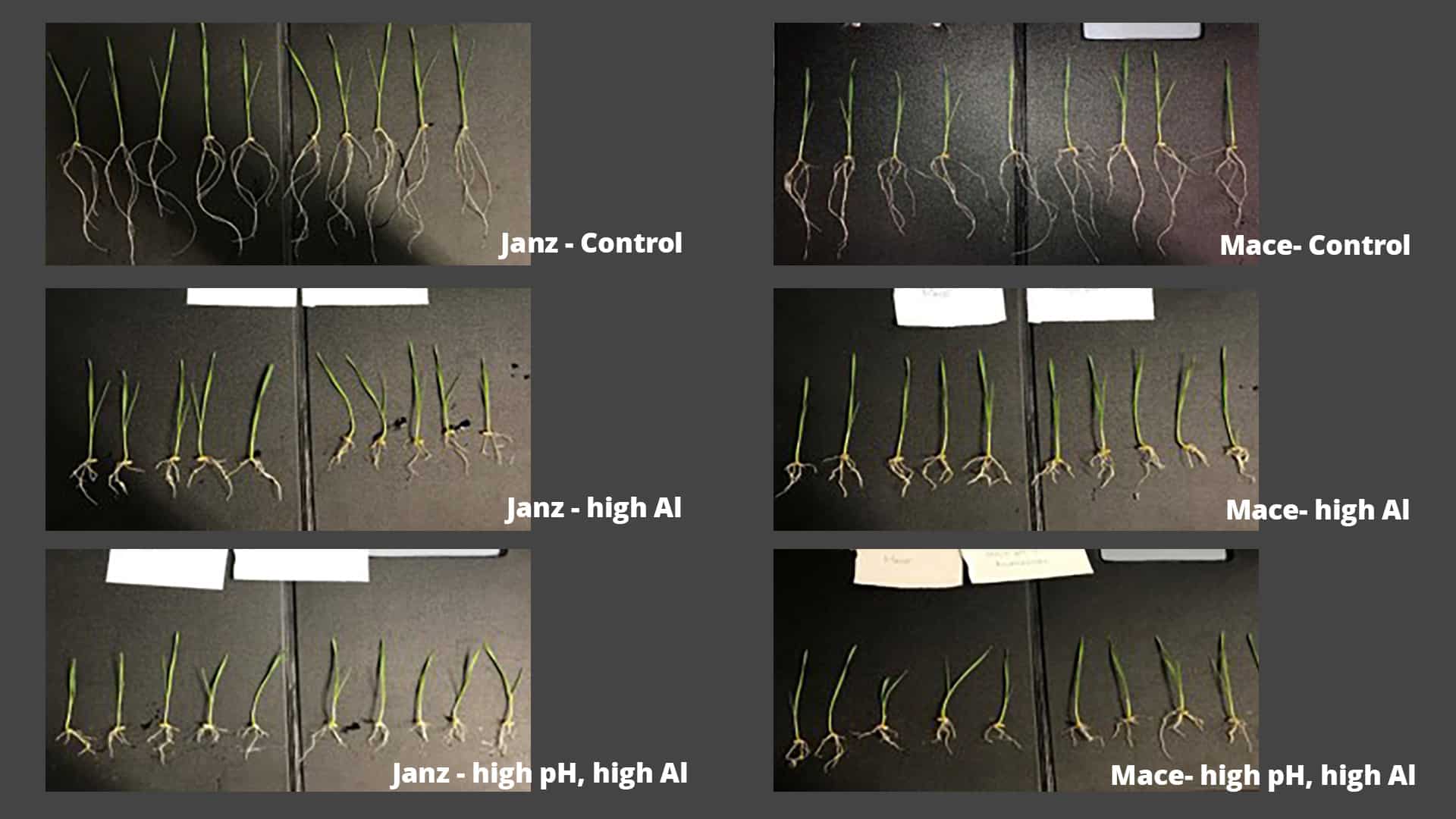START
FINISH
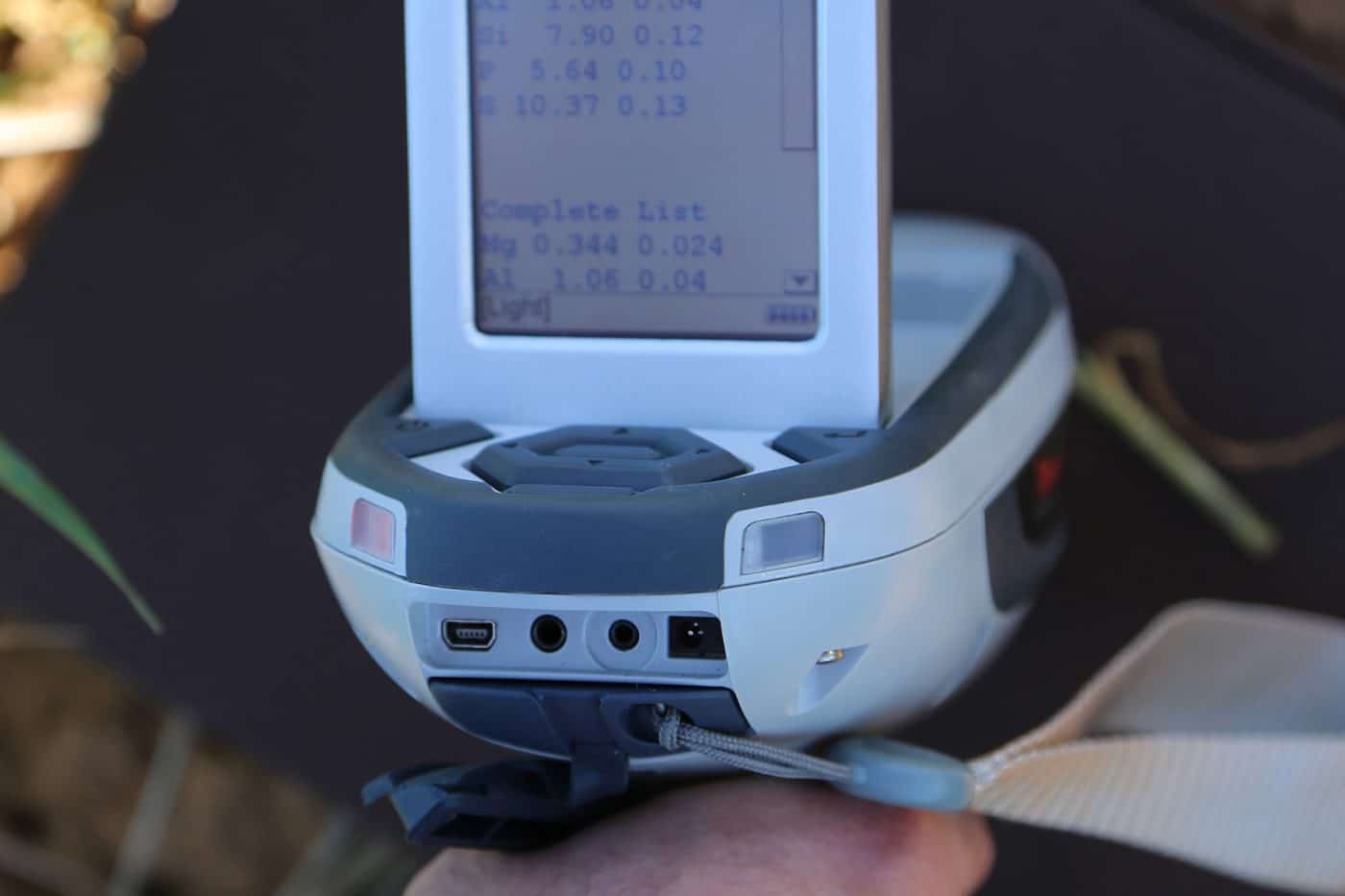
Summary
XRF technology has shown potential to provide rapid and cost effective analysis of selected plant nutrient concentrations in a wide range of crop types in southern Australia.
Background
X-ray fluorescence (XRF) is a new technology being investigated for its potential to provide an accurate assessment of nutrient concentrations of key elements such as Calcium, Potassium, Phosphorus, Sulphur and Zinc in a wide range of crops grown in SA broadacre agriculture.
Already used by the mining industry for analysing levels of minerals in rocks, the technology works on the principle that all elements emit a secondary (fluorescent) X-ray when they are exposed to an X-ray of a higher energy, and the intensity of the emitted X-rays is used to determine the make-up of the material.
Research Aims
The project aimed to assess the potential of handheld XRF technology for accurate and cheap analysis of macro and micronutrients in plant samples in the laboratory and in plant tissue in the field.
Specifically, it aimed to:
•Determine the relationship between XRF andICP values for phosphorus (plus others).
•Assess the effect of different plant tissuematrices and grains.
•Determine if samples need to be prepared,dried and ground, before XRF analysis.
In The Field
Initial calibrations of XRF determined plant nutrient concentrations (P, S, Ca, K and Zn) with that determined by standard procedures of acid digestion followed by analysis with ICP were developed for a range of crop types including wheat, barley, beans, field peas, canola, rye, lupins, chickpeas, vetch and lentils. Prepared samples (dried and ground) were collected from across a range of break crop trials at peak biomass.
Preliminary assessment of XRF measurements on crop leaf samples in situ was performed on canola, field pea and wheat grown on 24 soils of varying nutrition in the glasshouse.
Field analysis of leaf nutrient contents by XRF occurred at three main field sites using phosphorus responsive trials of wheat, barley, canola, beans and field peas. The youngest fully emerged blade on the main stem was analysed in situ with XRF, before leaf samples were bagged and dried in the laboratory. XRF analysis was performed on intact samples, then acid digestion and ICP analysis was carried out.
Grain samples were also tested in the field by XRF as single grain heads before being threshed and ground and analysed by ICP.
Results
Calibration sets have been developed for canola, chickpeas, field peas, lupins, rye, vetch and wheat. This includes correlations with ICP measurements for P, S, Ca, K and Zn.
Results for P testing in the glasshouse indicate a moisture effect (which decreases plant density) on the analysis of the leaf sample by XRF for barley and wheat, compared to higher correlations obtained after drying the leaf samples.
On site field analysis of leaf nutrient contents by XRF showed there were no significant correlations between XRF and ICP results for wheat and barley at P deficient sites. It appears that the state of the plants severely affected the ability of XRF to measure counts of P in the leaf. This is likely due to the high moisture contents and P concentrations being too low to be detected.
Compared to wheat and barley, however, significant correlations were obtained for P content in beans, canola and field peas. This could be due to higher P content in these plants or a reduced moisture content in the leaves because these crops were further advanced.
Drying the leaf samples allowed for moderate correlations between XRF and ICP for wheat and barley. Removing the water content improves the ability of XRF to measure P.
Similar to the leaf samples, grain samples were analysed in the field before processing in the laboratory. XRF was unable to measure nutrient concentrations of intact grain samples apart from Zinc. By grinding the grain samples, XRF was able to accurately measure the P concentration in grain samples.
XRF technology enables rapid, cost-effective and highly accurate determination of selected nutrient concentrations (Ca, K, P, S and Zn) in a wide range of crop types after being sufficiently prepared, e.g. dried and ground.
Project Participants
University of Adelaide: Dr Sean Mason, Associate Professor Ann McNeill, Dr Tim McLaren, Dr Ashlea Doolette
The Problem
Measuring crop nutrient concentrations traditionally using ICP (inductively coupled plasma) analysis requires plant material to be ground, digested in acid to produce a solution, and has a turnaround time of about three days and an associated cost involved.
The research
X-Ray Fluorescence technology has been tested on wheat, barley, beans, field peas, canola, rye, lupins, chickpeas, vetch and lentils, with varying degrees of success, as an alternative to ICP. The research looked at concentrations of calcium, phosphorus, potassium, sulphur and zinc for a large range of broadacre crop types grown in southern Australia.
More information
Dr Sean Mason, University of Adelaide Research Fellow
T: 08 8313 8107
E: [email protected]
Value for Growers
• XRF has shown considerable potential to measure selected nutrients in various crop species applicable to SA broadacre agriculture with the potential to reduce costs and turnaround time of results.
• Sample preparation improves results but portable XRF has also shown to be promising for selected nutrients in the field by analysing samples in situ.
• By removing plant moisture, but without any further sample preparation, an accurate assessment of plant nutrient concentrations can be obtained using XRF.
By utilising XRF technology, advisers, agronomists, and researchers have access to rapid and cost effective analysis of selected nutrient concentrations of a wide range of crop species.

